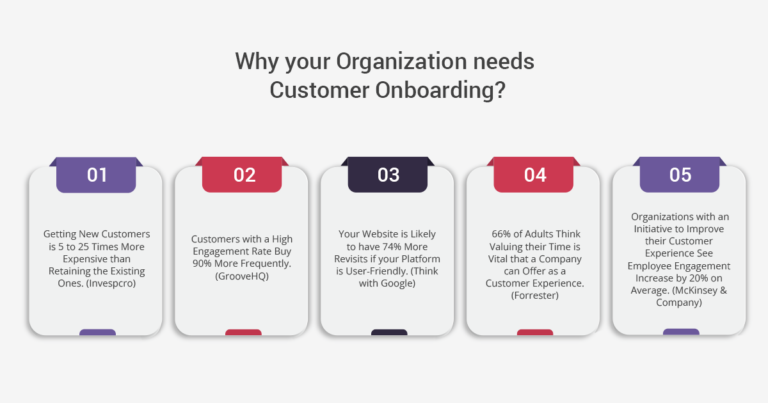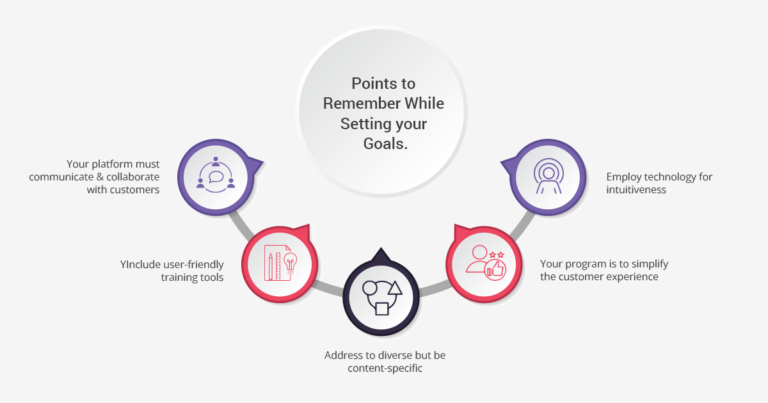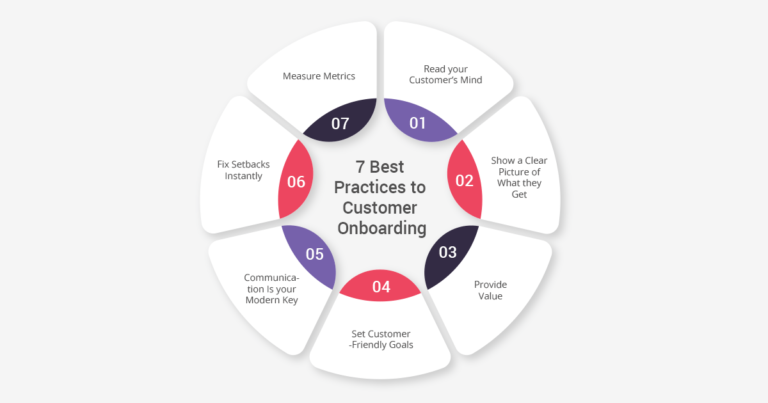A Quick Guide to Successful Customer Onboarding
- Ivy Lobo

- Jul 16
- 6 min read
Updated: Oct 1

This blog will EXPLAIN you how to keep and please customers by developing an effective customer onboarding program for your organization, along with a quick guide to successful customer onboarding.
Additionally, it covers the importance of an onboarding strategy for achieving your goals and enhancing the overall customer experience.
Have a Look at Some Customer Training Best Practices in Brief
Tip# 1: What is Customer Onboarding?
Customer Onboarding involves creating an intuitive environment to improve the experience of your post-purchase customers and support their goals aligned with using your product.
Your customers are often unaware of the full potential of your product. They might be dealing with minor issues by watching random product demonstration videos on YouTube or by contacting your customer support team.
Despite these resources, they still struggle with major issues. In essence, customers feel like they are already climbing a hill while only using the basic features, leaving the marketing team puzzled about why the advanced features are underutilized.
Customer Onboarding Tactics
Allow User-friendly Progress
Employ Content Value
Design Specific Goals (Customer-Centric)
Acknowledge Desired Team

Customer boarding is the anchor to hold (retain) your ship (existing & new customers) to the port (product-use) until that ship propels in the direction of the wind (customer expectations), then bon voyage!
Tip# 2: Importance of Customer Onboarding Process
There was a period when, if individuals struggled to understand a product's manual, they would rely on their own clever methods and tweaks to make sense of it.
At that time, people had more time and patience than they do now, where time is scarce and options are numerous. In this environment, it is difficult to expect customers to quickly understand the value of your product.
To understand why your organization requires a customer onboarding program, here are some statistics and reports that emphasize this important change in buyer behavior.
Why Your Organization needs Customer Onboarding?

Getting new customers is 5 to 25 times more expensive than retaining the existing ones. (Invespcro)
Customers with a high engagement rate buy 90% more frequently. (GrooveHQ)
Your website is likely to have 74% more revisits if your platform is user-friendly. (Think with Google)
66% of adults think valuing their time is vital that a company can offer as a customer experience. (Forrester)
Organizations with an initiative to improve their customer experience see employee engagement increase by 20% on average. (McKinsey & Company)
Tip# 3: Create a Successful Customer Onboarding Strategy.
Successful customer onboarding indicates a high likelihood of customer loyalty. However, there are two major setbacks that can increase customer churn:
If they don’t find a higher scope of product use.
If they don’t see any value.
In both scenarios, customers are inclined to switch to competitors. It's essential to minimize customer churn and deliver value that meets their expectations.
Onboarding training is necessary to enhance customer onboarding in a transparent and responsive manner. Additionally, a strategy should be in place to establish, create, manage, implement, measure, and adjust your training program to align with customer needs.
How To Create an Onboarding Strategy that Retains & Delight More Customers?

1. Set Your Goals.
Initially, establishing smart goals for your customer onboarding provides a framework to easily track each customer's progress and deliver tailored content that meets their specific needs.
Additionally, the learning environment significantly transforms, enhancing both customer experience and employee convenience.
2. Points To Remember While Setting Your Goals.

Your platform should enable communication and collaboration with customers.
Incorporate training tools that are easy to use.
Cater to diverse audiences while remaining content-specific.
Your program should streamline the customer experience.
Utilize technology to enhance intuitiveness.
Keep these points in mind as your L&D team and the project manager establish onboarding program goals.
3. Gather Your Team.
SaaS (software as a service) should have a customer success manager (CSM) who connects the sales and support teams.
Rather than delving into the details of daily product use, the CSM focuses on achieving customer goals through strategic discussions.
The more customer-centric the team, the smoother the onboarding process will be. Additionally, having a CSM alongside a project manager ensures that your onboarding strategy runs smoothly, even if adjustments are needed in the early stages.
You might also be managing responsibilities yourself to ensure the process flows well. You can delegate such tasks to a Subject Matter Expert (SME), like your top product salesperson.
4. Time for Whiteboard Strategy.
Coordinate instructional designers with project managers and subject matter experts to outline a customer onboarding journey. Break down the process from the sign-up phase to learning advancement into distinct milestones.
This approach facilitates the deployment of valuable resources and tools as each customer reaches their milestones, allowing for consistent updates on their progress.
5. Preparing Your Content.
After finalizing the strategy, the next step is to appoint a content designer, ideally a graphics designer.
Transform your learning course into visual elements, such as quizzes, challenges, and other content creation tools.
6. Right LMS Is A Must.
Choose an LMS that can effectively upload and support your e-learning courses. These courses may include content in various formats such as video, images, and text.
Therefore, it's wise to invest in an LMS that seamlessly integrates with your learning content.
7. Ready For Testing?
Testing serves as a means to confirm the effectiveness of your onboarding program. Engage beta testers, like top customers, or establish a community to inform them about your new training program. Informed customers are more likely to participate, as they recognize it as familiar territory.
8. Launch It Live.
Bon Voyage! Before launching your onboarding program, ensure you're aware of the pre-launch phase. Deliver a smooth onboarding experience alongside existing programs and gather feedback from reliable users.
Tip# 4: Few Examples of Successful Customer Onboarding
Until now, it’s crystal clear that if you don’t steer your onboarding training consistently, it can flow in any direction. So let’s understand through few successful customer onboarding best practices examples:
1. Canva
Canva offers users a freemium experience for designing and sharing anywhere they choose. It is recognized for its intuitive dashboard and customizable brand kit. The platform provides access to a library containing 2 million photos, images, icons, and various templates.
2. Duolingo
Duolingo provides new customers with an animated walk-through to familiarize them with the platform. They also offer step-by-step guidance for new users to prevent any initial confusion.
3. DropBox
Dropbox offers an intuitive welcoming tool featuring a series of questions designed to help new users understand and plan their personalization. This aids in creating a more user-friendly and adaptable platform.
Tip# 5: Effective Use of Technology for Customer Onboarding.
Your customer anticipates having readily available onboarding support even before engaging with your customer success manager or team.
Now is the moment to leverage technology! Implement multi-channel automated support such as AI chatbots and support suites.
Tip#6: 7 Best Practices to Customer Onboarding

1. Read Your Customer’s Mind
Steer clear of relying solely on scalable metrics for analysis! Begin by focusing on customers' behavior, situations, challenges, and personal objectives. It's crucial for customers to feel successful when using the product.
Excessive analysis requires customer involvement to gather data, which can lead to increased customer churn. Approach their needs with care and tailor your future strategies accordingly.
2. Show A Clear Picture Of What They Get.
Avoid over-promising the value of your product. Set customer expectations through a strategically planned vision. When customers understand their ultimate goal with your product, they remain patient with daily progress and may even depend on advanced features to accelerate their progress.
3. Provide Value.
Tailor your content to meet the specific needs of each customer's perspective on your product. Every customer views your product differently, so offering solutions through specially crafted content is beneficial.
4. Set Customer-Friendly Goals.
Your customer onboarding strategies should align with customer advancements. Data imports facilitate the creation of a flexible program that can be easily restructured, modified, and tailored to meet customer-focused objectives.
5. Communication Is Your Modern Key.
Utilize training tools, intuitive KPI dashboards, and email communication templates to minimize customer churn during onboarding and facilitate direct communication with your customer success manager.
6. Fix Setbacks Instantly.
In the early phase of customer onboarding, there can be several challenges related to communication, the learning process, and even a fundamental understanding of product usage. Prepare your dedicated support team to improvise and equip them with intuitive technology so they can address these issues proactively.
7. Measure Metrics.
Your saas onboarding best practices is the key benefit to your business goals too. Identify pain points and KPI’s through tracking metrics:
Customer Lifetime Value (LTV)
Churn Rate (CR)
Net Promoter Score (NPS)
Customer Engagement Rate (CER)
Tip# 7: Measure the Impact of Customer Onboarding training!
Once you implement these customer training best practices in your onboarding program, you'll understand the importance of evaluating the impact of the details you've outlined to enhance the customer experience.
Initially, focus on two key milestones to assess:
When a new customer signs up for your product.
When they achieve their first success with your product.
This analysis will enhance your onboarding training program, improving customer retention rates and allowing for regular updates on customer engagement levels.
Conclusion:
Onboarding is a success when you employ customer-centric tools & a seamless onboarding experience for customers.
Friction is likely to happen in every training program. Setbacks are a predictable reality, but re-creating through proper customer-involved strategy will evolve your whole business module.
To address your SMART training goals and help create an intuitive program, we act as a tool to hammer & shape your business strategies.
Employ the pioneering in learning technology to retain & delight your customers NOW.











Comments